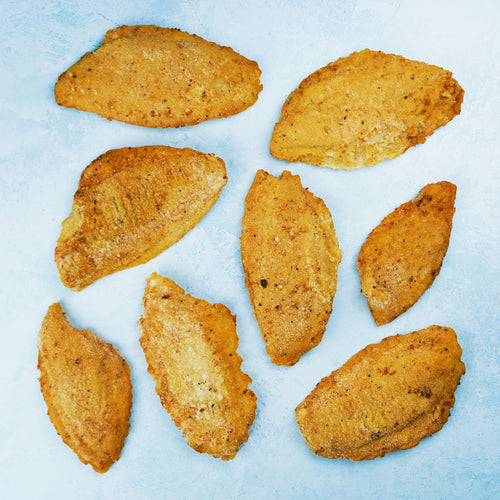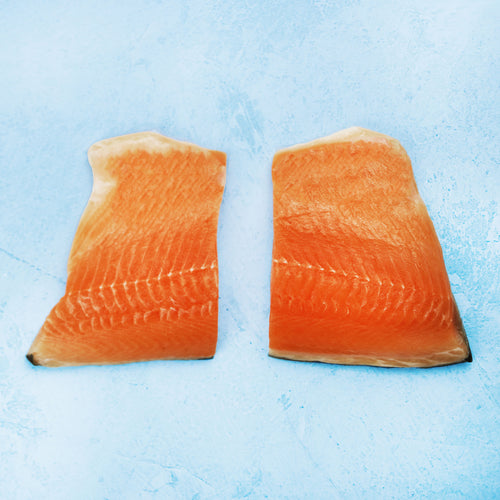A Guide To Sushi
What is sushi?
‘Sushi’ is the combination of both sushi rice and sashimi fish or other ingredients such as seaweed or vegetables. The key component to define it as sushi is the sushi rice.
What is sashimi?
Sashimi is the Japanese description for sliced raw fish to be eaten raw. Sashimi is typically eaten on it’s own and served with soya sauce, pickled ginger and wasabi.
The next common question we get asked is - is this fish sushi grade? So what is sushi grade anyway? Sushi grade is a clever term that describes top quality fish that’s best suited to making sushi and sashimi. As sushi and sashimi is eaten raw, the taste and texture cannot be masked with sauces and the cooking process. The fish needs to be free of blemishes and bruising and must be super fresh so that the taste and smell is perfect and not ‘fishy’. So in summary, sushi grade fish is just top quality fish that has been handled with care from ocean to plate.
There is a common misconception from our British customers that there is some sort of ratified international seafood body that goes around certifiering fish as ‘sushi-grade’. This is not the case. Sushi grade is a marketing term that has taken hold of the Western sushi and sashimi markets in recent years. It is down to the wholesalers and retailers to take responsibility for the labelling of their products.
What isn’t up to the retailers anymore is how the fish should be handled before being sold to the public. Any fish sold within the EU since 2006 that’s intended to be eaten raw, such as sushi and sashimi has to have been frozen for at least 24 hours below minus 20 celsius. Luckily for us, this fits in nicely with how we do things around here as we’re 100% frozen ;)

What's the most popular sushi in the UK?
Most people are familiar with sushi rolls which are typically raw fish and vegetable such as carrot or cucumber wrapped in sushi rice and then rolled in seaweed sheets. This makes a tube that is then sliced into portions.
Nigiri is also very popular. Nigiri are small balls of sushi rice that are pressed in oval shapes and topped with thinly sliced sashimi, meat vegetables or egg. Nigiri started as a fast food in Tokyo and we’re sure each chef has their own signature nigiri.
The majority of sashimi we sell goes to customers in the UK who are planning to make sushi rolls, nigiri or serve it bare as sashimi.

What cut of sashimi do we recommend?
On a number of our sashimi pages we differentiate between back sashimi and belly sashimi or grade 1 and 2.
Back vs belly
The ‘back strips’ are cut from what people would most commonly know as the ‘loin’ of the fish. These cuts offer the most rectangular and symmetrical shapes. These strips are great for cutting thin slices for nigiri. We’ve recently introduced a range of cut-by-us saku blocks which are large loin strips generally 250g - 600g. These are the perfect piece for when you’re hosting for a larger group.
We see the belly cuts being used more for sashimi instead of sushi. With most sashimi fish the belly cuts have a higher oil and fat content in the flesh. This higher fat content gives the fish a creamier taste. Our most popular belly cut is from salmon sashimi.
Grade 1 vs Grade 2
This grading system is entirely set by us here at The Fish Society. Grade 1 is our best offering these will be the best shape, from the best section of the fillet and have no blemishes and imperfections. The grade 2 will be a slightly awkward shape or have a blemish or some other slight imperfection. We continue to sell it as it is still good fish that can be used for sushi and sashimi but not in the same league as the grade 1.
How much sushi fish per person?
If you’re eating the fish as sashimi we recommend 150g per person for a generous main course. Our sashimi selection packs are a good way to get a little bit of each of our most popular sashimi fish.
How much fish should you use when making Nigiri? We usually say 15g of fish per nigiri. This can vary slightly depending on the shape of your strip.
Have you got any tips for handling and preparing sushi and sashimi?
When you’re defrosting the sashimi strips its best to take them out of the packs and wrap them in some absorbent paper towel. You’re trying to absorb the excess moisture released during the defrosting process.
Use a sharp knife! I know this sounds so obvious but it’s really important. You won’t be able to take control of the strip and produce precision strips without one. With a semi sharp knife you'll more than likely ‘smush’ the fish up a bit whilst sawing through it. The sharper the knife the finer the slices you’ll be able to cut too! In between slices give the blade of the knife a quick wipe with paper towel. This will again help you cut the fish with precision.

New in
Find exactly what you want. We sell 200 kinds of fish - way more than anyone else.
SHOP NEW IN







